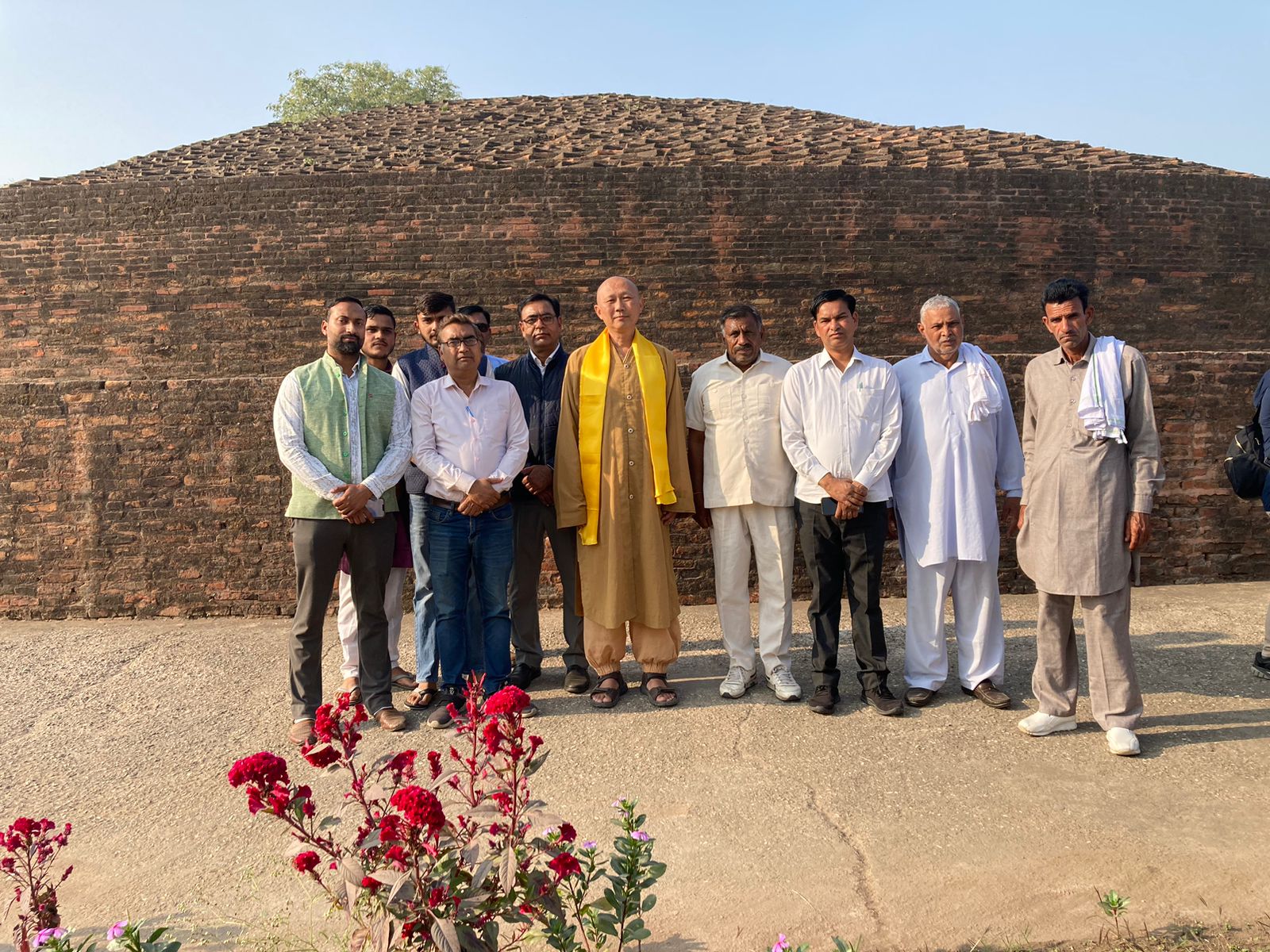Our sincere thanks to Nava Nalanda Mahavihara, Deemed University, Nalanda for conceiving the commemoration of Parinibbāna of Mahāprajāpatī Gotamī (MPG) in the very locality where MPG attained Parinibbāna. As per the Buddhist texts, Mahātherī Mahāpajāpatī Gotamī along with courageous 500 Shākyan Therīs entered Parinibbāna in Vaishalī. According to 7th CE monk scholar Xuanzang the vicinity of the village Birpur should be the Kśetra (area) of the Parinibbāna of Mahāprajāpatī Gotamī Therī.
Gotamī Theirī Apadāna of Pali tradition does not give the date, but it is implied. However, the same Chinese and Tibetan translations/parallels give the date. As implied in the Kṣudrakavastu of the Mūlasarvāstivāda Vinaya (extant in Tibetan and Chinese translations), Mahātherī Mahāpajāpatī Gotamī(MPG) along with 500 Shākyan bhikkhunī attained Parinibbāna seven days after the Buddha announced his impending Mahāparinibbāna on Magha Masam Pūrṇimā. Therefore, seven days after the Magha Masam Pūrṇimā according to the Indian lunar calendar falls on Phāgun Masam Krishna Paksha Saptamī.
Mahāpajāpatī Gotamī was the foster mother of the Buddha. Inspired by the transformation in her foster son (Buddha), she too aspired to be initiated into the Buddha Dhamma. Her values, vision, leadership and resolve led to the formation of the bhikkhunī saṅgha and her being the first bhikkhunī. Mahāpajāpatī means ‘great leader of the assembly’. True to her name she became a source of strength and support for many women during her life and after her death. Her contributions to the Buddha, Dhamma and saṅgha are a lasting legacy that goes beyond mortality.
It is gratifying to witness the beginning of the resuscitation of the ‘Mahāprajāpatī Gotamī Therī Parinibbāna Kśetra’. We are thankful to the Vietnamese Nunnery (Vaishali) and the Buddha World School (Vaishali) for their participation. We are grateful to the people of ‘Mahāprajāpatī Gotamī Therī Parinibbāna Kśetra’, i.e. the village Birpur for taking time out of their busy schedules and welcoming us with enthusiasm and great warmth. Village Birpur had many archaeological mounds until a few years ago. Villagers now realise the significance of this place and are committed to protecting the potential mounds. In the coming years, we hope to engage more stakeholders to facilitate the rejuvenation of the tangible and intangible legacy of Mahātherī Mahāpajāpatī Gotamī, the progenitor of the Bhikkhunī Saṅgha.
Read about the renunciation journey of Mahātherī Mahāpajāpatī Gotamī.- The Arduous Journey: Mahāprajāpatī and the Courageous, Committed 500
Thanks to Venerable Tathālokā Therī for her invaluable guidance.
Here are some pictures from the event.
All Pictures- Vikash Kumar and Shantu Simple
 |
| An aerial view of Mahāprajāpatī Gotamī Therī Parinibbāna Kśetra |
 |
Venerable Bhikkhunīs offering prayers. |
 |
Venerable Bhikkhunīs offering prayers. |
 |
| A Group Picture of the Participants. |
 |
Venerable Bhikkhunīs distributing sweets. |
 |
| Dr. Harsh Ranjan Kumar, Archaelogy Directorate, Government of Bihar with ancient pottery found at the site. |
 |
| Pottery found from the site suggests this site to be from the Buddha's time (6th BCE). |
 |
| With Dr Harsh Ranjan Kumar. |
 |
| Remains of votive stupa? |
 |
| The process of revitalisation has begun!! |













.jpeg)
.jpeg)

.jpeg)

.jpeg)
.jpeg)
.jpeg)



.jpeg)

.jpeg)

.jpeg)


























